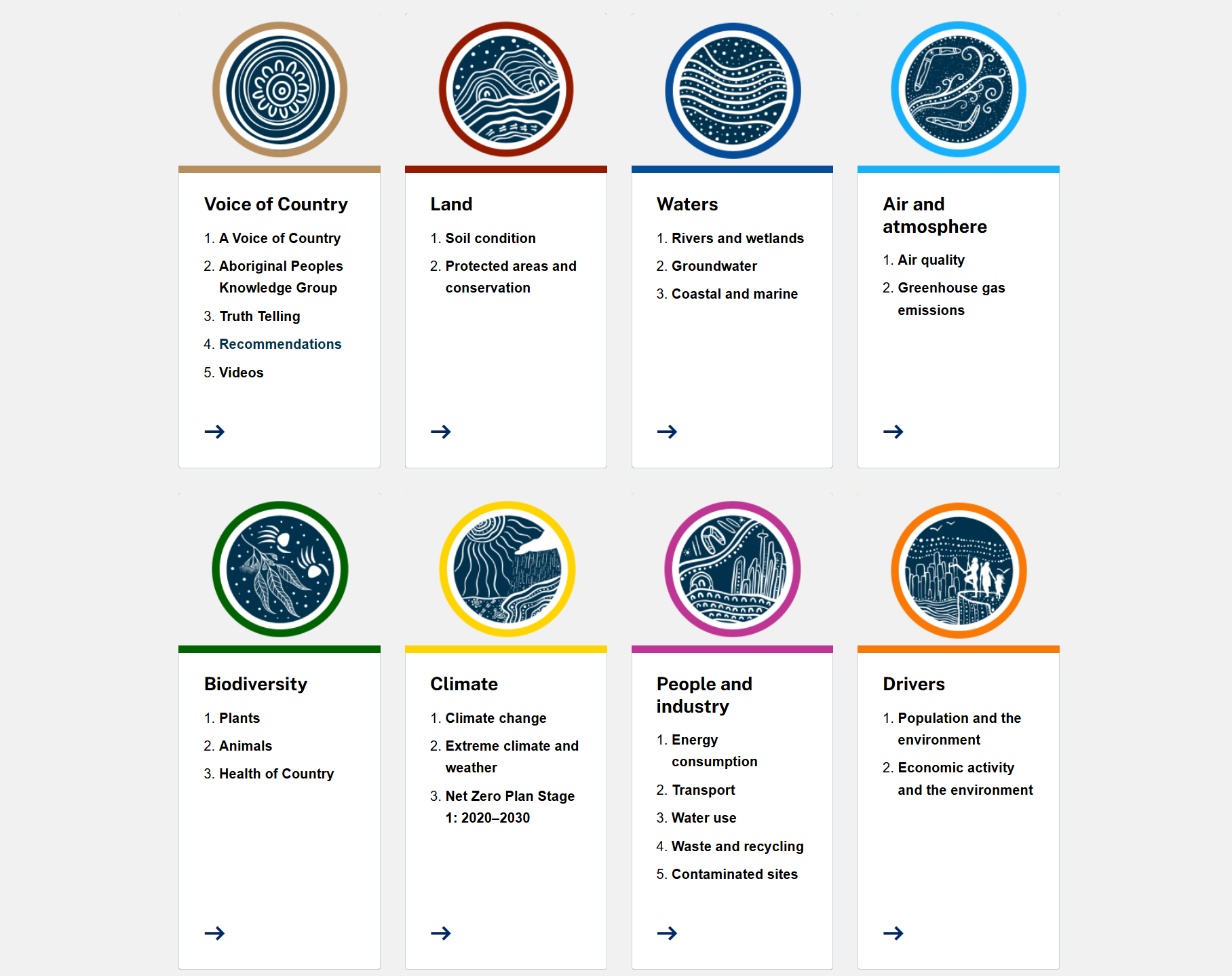How to read this report
Themes
In the NSW State of the Environment 2024, topics were grouped into broad themes. These themes can be considered to relate to environmental groupings (, , , ) or pressures that are increasing the impact of human activities and natural processes (, , ).
These themes include:
- statement from the EPA Aboriginal People’s Knowledge Group (where relevant)
- high-level introduction to each related topic in a global or Australian context
- key findings for each related topic.
The is the first theme in the report. It introduces the , their collective worldview on the importance of incorporating Aboriginal cultural practices and knowledges in environmental management, and provides specific recommendations for ongoing collaboration. It also describes one member's concerns about exposure of his community to pollution.
Image 1: NSW SoE website homepage showing relationship of themes and topics, 2024

Topics
Each topic will display a series of tabs:
- a current tab – available to be updated if new data comes in before the next report
- a 2024 tab – exact content as the 2024 Tabled Report
- a 2021 tab – exact content as the 2021 Tabled Report, if the topic was included in that report.
- a 2018 tab – exact content as the 2018 Tabled Report, if the topic was included in that report.
Topic structure
In 2024, the structure of each topic will follow a modified Pressure–State–Response model: Overview – Status and trends – Pressures and impacts – Responses.
- Overview: provides a high-level introduction to the topic, what it is, why it’s important,
- Status and trends: provides as assessment of the topic indicators and relevant data for the current state and the trends over time.
- Pressures and impacts: describes how human activities and natural processes influence the environmental condition and the impacts that the environmental condition can then have on ecosystems and human health.
- Responses: identifies existing program, projects and initiatives from both government and non-government organisations in response to declining indicators, as well as future opportunities to fill identified gaps in responses or data for assessment under status and trends.
Where relevant, topics include links to for alignment of language and to allow for comparison of data and targets.
See the page for the full list of findings in this report.
Content developed by the (APKG) is indicated throughout the report where the paperbark colouring is next to the text.
When the above symbol is used, it indicates the content was developed by the whole of the APKG.
Terminology
This report uses technical terminology and commonly used acronyms and abbreviations. See the page for the full list of terminology and the page for the full list of abbreviations and acronyms.
This report uses various units of measure. See the page for the full list.
For information on NSW land and marine bioregions, see the page.
Indicator guide
NSW State of the Environment 2024 assesses the status and trends of each of 71 environmental indicators, along with the reliability of the information used to provide an indicator rating.
See the page to learn how terms and symbols are defined in indicator tables.
